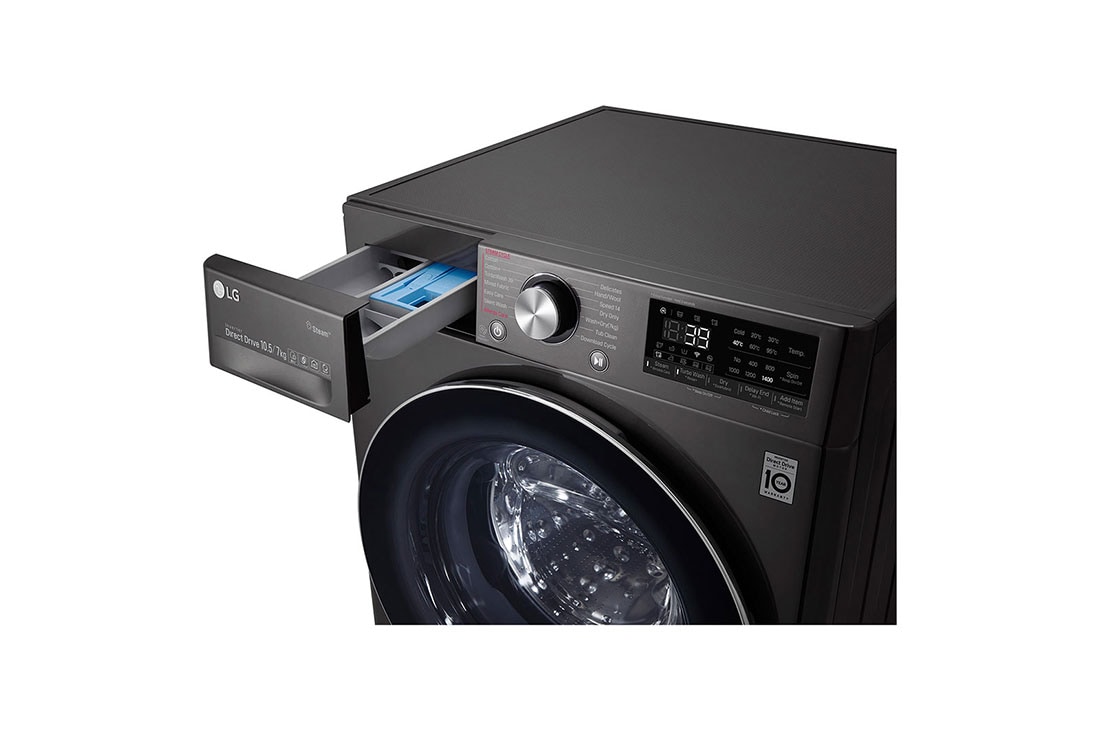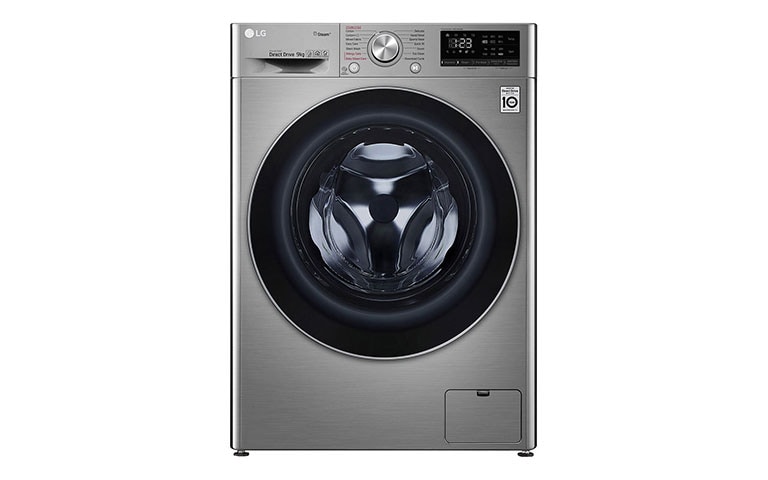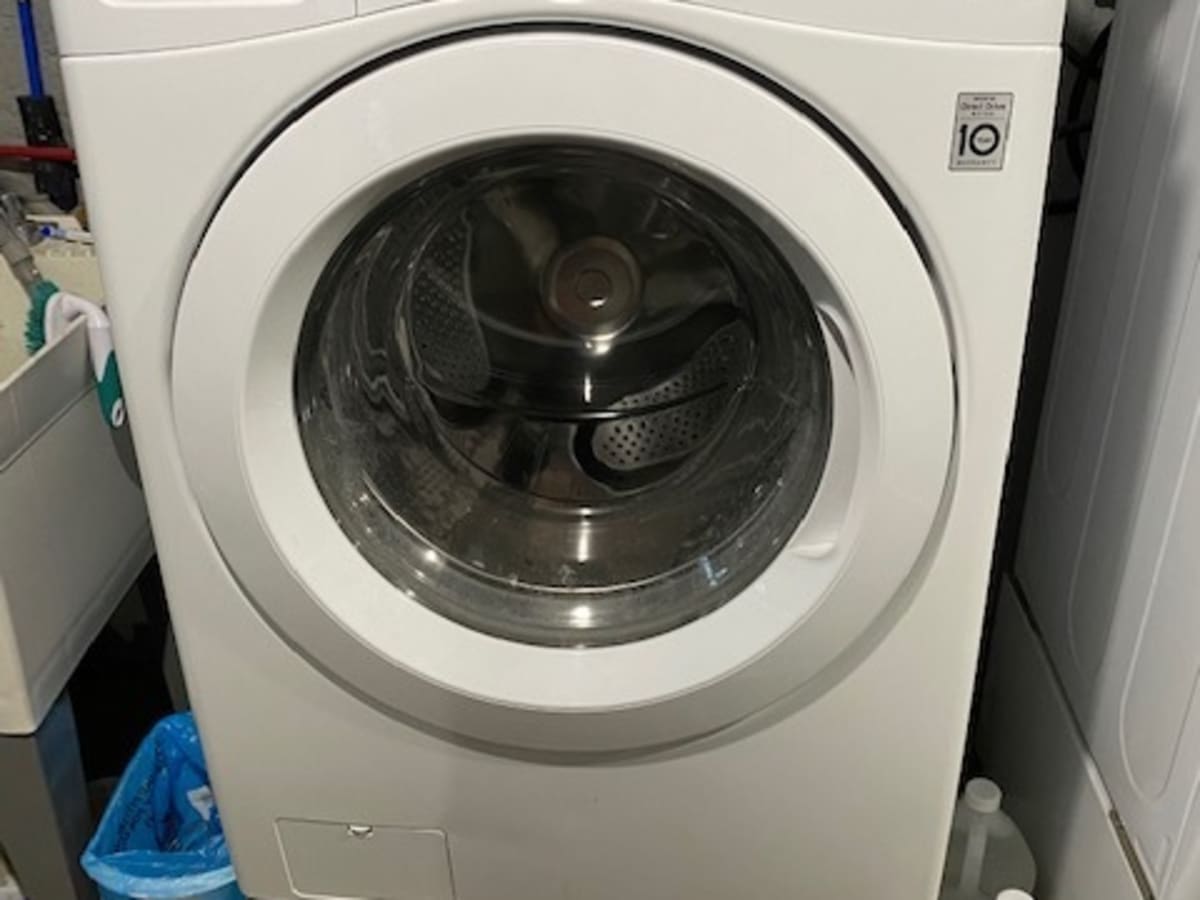
Introduction to LG Washer Maintenance
Importance of Regular Maintenance
Regular maintenance plays a crucial role in keeping your LG washing machine running smoothly and efficiently. Performing maintenance approximately once a month on all sections of the washing machine helps prevent potential issues and ensures optimal performance. By following the manufacturer’s maintenance guidelines, you can extend the lifespan of your LG washer and avoid costly repairs in the future.
Benefits of Properly Maintaining LG Washer
Properly maintaining your LG washer offers a range of benefits that make it well worth the effort. Firstly, regular maintenance helps to keep your washing machine clean and free from any build-up that could affect its performance. It also ensures that the interior filters are clear, allowing water to flow through effectively during the washing cycle. Additionally, maintaining the detergent dispensers prevents any clogs and ensures that your laundry comes out fresh and clean every time.
In conclusion, investing time in performing regular maintenance on your LG washing machine not only keeps it in good working condition but also saves you time and money in the long run. Following the recommended maintenance schedule and taking care of all aspects of your washer will help you enjoy clean and efficient laundry days for years to come.

Understanding LG Front Load Washer Maintenance
Components of LG Front Load Washer
LG Front Load Washers are equipped with various components that work together to ensure efficient cleaning and performance. Some key components include the drum, motor, door gasket, detergent dispenser, and drain pump. Understanding how each part functions and the role it plays in the washing process is essential for proper maintenance.
Common Issues Faced with LG Front Load Washer
Despite being reliable appliances, LG Front Load Washers can encounter common issues if not properly maintained. These issues may include mold or mildew growth in the door gasket, clogged detergent dispenser, foul odors, loud noises during the spin cycle, or water leakage. Regular maintenance routines can help mitigate these problems and ensure that your LG Washer continues to operate smoothly.
To address these common issues, consider implementing the following maintenance tips:
- Clean the door gasket regularly to prevent mold and mildew buildup.
- Use a washing machine cleaner to remove residue from the drum and detergent dispenser.
- Check for any leaks or unusual noises during each wash cycle.
- Ensure the drain pump filter is free from debris to prevent blockages.
By following these maintenance practices and staying proactive in caring for your LG Front Load Washer, you can prolong its lifespan, maintain optimal performance, and avoid unexpected repair costs. Investing time and effort in proper maintenance will not only benefit the efficiency of your washer but also contribute to hassle-free laundry days for years to come.

Cleaning the Detergent Dispenser
Importance of Regular Cleaning
Steps to Clean the Detergent Dispenser
Cleaning the Detergent Dispenser
Importance of Regular Cleaning
Regularly cleaning the detergent dispenser of your LG Front Load Washer is crucial to maintain optimal performance. Often underestimated, this simple step plays a significant role in ensuring that your washer continues to function efficiently. Over time, residue and build-up can accumulate in the dispenser, affecting the cleanliness of your laundry and the overall performance of your washing machine. By incorporating routine cleaning of the detergent dispenser into your maintenance schedule, you can prevent potential issues and prolong the lifespan of your LG Washer.
Steps to Clean the Detergent Dispenser
To clean the detergent dispenser of your LG Front Load Washer effectively, follow these simple steps:
- Remove the detergent dispenser: Pull out the dispenser towards you until it stops.
- Rinse and clean with water and a brush: Thoroughly rinse the dispenser with water and use a brush to scrub away any residue.
- Clean the interior of the detergent dispenser: Ensure that the inside of the dispenser is free from any clogs or build-up.
- Replace the dispenser back: Once cleaned, reinsert the dispenser back into its place.
By following these steps and incorporating regular cleaning of the detergent dispenser into your maintenance routine, you can ensure that your LG Washer operates smoothly and efficiently for years to come. Taking care of this often overlooked component can make a significant difference in the performance and longevity of your washing machine.

Maintaining the Drum and Rubber Seal
Preventing Mold and Mildew Build-Up
When it comes to front-loading washing machines, preventing mold and mildew build-up in the drum and rubber seal is essential for optimal performance. The damp environment of the washer, along with leftover detergent and lint, provides the ideal breeding ground for mold and mildew. Regular maintenance is key to avoiding these issues and ensuring your washing machine stays in top condition.
Cleaning the Drum and Rubber Seal
Regularly checking the drum and rubber seal for any foreign objects or residue is a good practice to prevent mold and mildew. Begin by inspecting the drum and rubber seal for any visible signs of residue, lint, or foreign objects. Use a damp cloth to wipe down the drum and rubber seal, ensuring they are clean and free from any build-up. Pay particular attention to the rubber door seal, which is prone to trapping moisture and detergent residue.
To clean the rubber door seal thoroughly without damaging it, avoid using vinegar as it can corrode the rubber material. Instead, opt for a mild detergent solution and a soft brush to gently clean the seal. Be cautious not to scrub too harshly to prevent damage. By maintaining a clean drum and rubber seal, you can prevent mold and mildew build-up, ensuring your front-loading washing machine operates efficiently for longer.
Incorporating these simple maintenance practices into your routine can significantly extend the lifespan of your front-loading washing machine and keep it running smoothly for years to come. By taking care of the drum and rubber seal, you can avoid potential issues and enjoy clean, fresh laundry every time.

Checking and Cleaning the Drain Pump Filter
Importance of Drain Pump Maintenance
Maintaining the drain pump filter in your LG front load washer is crucial to ensure the unit operates efficiently and avoids leaks. Over time, debris, lint, and other objects can accumulate in the drain pump filter, hindering the washer’s performance. Regularly checking and cleaning the drain pump filter is essential to prevent clogs, leaks, and potential damage to the machine. By taking the time to inspect and clean the filter, you can prolong the lifespan of your washer and maintain optimal performance.
Steps to Clean the Drain Pump Filter
To clean the drain pump filter in your LG front load washer, follow these simple steps:
- Turn off the washer and unplug it for safety.
- Open the service panel located at the front of the washer.
- Unclip the drain hose and carefully remove it.
- Take out the drain filter from its housing.
- Clean the drain filter thoroughly, removing any debris or blockages.
- Inspect the base of the filter housing and clean it if necessary.
- Reinsert the drain filter back into its place securely.
- Reattach the drain hose, ensuring it is properly clipped back into position.
- Inspect the drain hose for any signs of damage, such as cracks or leaks, and replace if necessary.
By following these maintenance steps regularly, you can ensure that your LG front load washer remains in optimal condition, free from leaks and operating efficiently. Taking care of the drain pump filter is essential for the longevity of your washer and ensures that it continues to deliver top-notch performance.

Cleaning the Exterior of the Washer
Importance of Exterior Cleaning
Keeping the exterior of your LG washer clean is not just about aesthetics; it also plays a crucial role in ensuring its longevity and efficiency. Regular cleaning helps prevent the buildup of dirt, grime, and detergent residue, which can affect the overall performance of the machine. By maintaining a clean exterior, you can extend the lifespan of your washer, avoid potential damage, and ensure that it continues to operate smoothly.
Best Practices for Cleaning the Washer Exterior
Gather Your Supplies: To clean the exterior of your LG washer, all you need is a clean cloth, warm water, and a neutral non-abrasive household cleaner. Ensure that the cleaner is safe to use on appliance surfaces to avoid any damage.
Wipe Down the Exterior: Dampen the cloth with warm water and a small amount of the cleaning solution. Gently wipe down the exterior surfaces of the washer, including the control panel, door, and sides. Pay extra attention to areas with visible dirt or stains.
Rinse and Dry: Once you have cleaned all the exterior surfaces, rinse the cloth with clean water and wipe down the washer again to remove any remaining cleaner residue. Finally, use a dry cloth to wipe down the surfaces and ensure they are completely dry.
Regular Maintenance: Make it a habit to clean the exterior of your LG washer regularly to prevent the accumulation of dirt and grime. This simple practice can go a long way in maintaining the appearance and performance of your appliance.
By following these best practices for cleaning the exterior of your LG washer, you can keep your appliance looking great and functioning efficiently for years to come. Regular maintenance helps you avoid unnecessary repairs and ensures that your washer remains in optimal condition.

Managing Odors in the Washer
Causes of Odors in the Washer
When your LG front load washer starts emitting unpleasant odors, several factors could be at play. The most common causes of washer odors include the accumulation of mold, mildew, and bacteria due to the washer’s airtight seal, moisture retention, and the growth of organic matter. Additionally, using excess detergent or fabric softener can leave behind residue that contributes to foul smells. These factors combined can result in a musty or sour odor emanating from your washer, which can transfer to your freshly cleaned clothes.
Tips for Eliminating Odors in the Washer
To combat and prevent odors in your LG front load washer, follow these effective tips:
Cleaning Routine: Implement a regular cleaning schedule for your washer to prevent mold and mildew buildup. Refer to the manufacturer’s guidelines on how often your specific model requires cleaning.
Use Vinegar: Run a cleaning cycle with white vinegar to kill bacteria and eliminate odors. Vinegar’s acidic properties help break down residue and keep your washer smelling fresh.
Opt for Baking Soda: Baking soda is a natural deodorizer that can help neutralize odors. Add a cup of baking soda to the drum and run a hot water cycle for a thorough clean.
Avoid Excess Detergent: Overloading your washer with detergent can lead to residue buildup, contributing to unpleasant smells. Use the recommended amount of detergent to avoid this issue.
By proactively addressing the causes of odors in your LG front load washer and following these preventive measures, you can enjoy fresh-smelling laundry without the worry of odor transfer. Regular maintenance is key to keeping your washer in top condition and ensuring your clothes come out clean and odor-free.

DIY Service and Troubleshooting Tips
How to Perform DIY Maintenance
For LG top load washers, performing regular self-maintenance is crucial to ensure optimal performance and longevity of the appliance. To keep your washer in top condition, follow these DIY maintenance tips:
Clean the Exterior: Wipe down the exterior of the washer with a damp cloth regularly to remove any dust, detergent spills, or dirt that may have accumulated.
Clean the Drum: Run a cleaning cycle with hot water and white vinegar to disinfect the drum and eliminate any bacteria or mold growth.
Inspect Hoses and Connections: Check the hoses and connections for any signs of wear, leaks, or blockages. Replace any damaged components immediately to prevent future issues.
Check for Blockages: Regularly inspect the drain pump filter and remove any debris or lint that may be blocking the flow of water.
Balance the Washer: Ensure the washer is level to prevent excess vibrations during the spin cycle. Adjust the feet accordingly for stability.
Troubleshooting Common Issues
In case you encounter any problems with your LG top load washer, refer to the troubleshooting guide provided by LG to identify and resolve common issues. Some common problems users face include:
Unusual Noises: If your washer is making unusual noises during the wash cycle, check for any loose items inside the drum or ensure that the washer is properly balanced.
Leaking Water: Inspect the hoses and connections for leaks, tighten any loose fittings, and check the door gasket for damages that may cause water leaks.
Error Codes: Pay attention to error codes displayed on the washer’s control panel. Refer to the user manual to understand what each code means and how to troubleshoot the issue.
By following these DIY service and troubleshooting tips, you can ensure that your LG top load washer remains in excellent working condition and efficiently handles your laundry needs. Regular maintenance and proactive troubleshooting can save you time and money by preventing major malfunctions and extending the lifespan of your appliance.